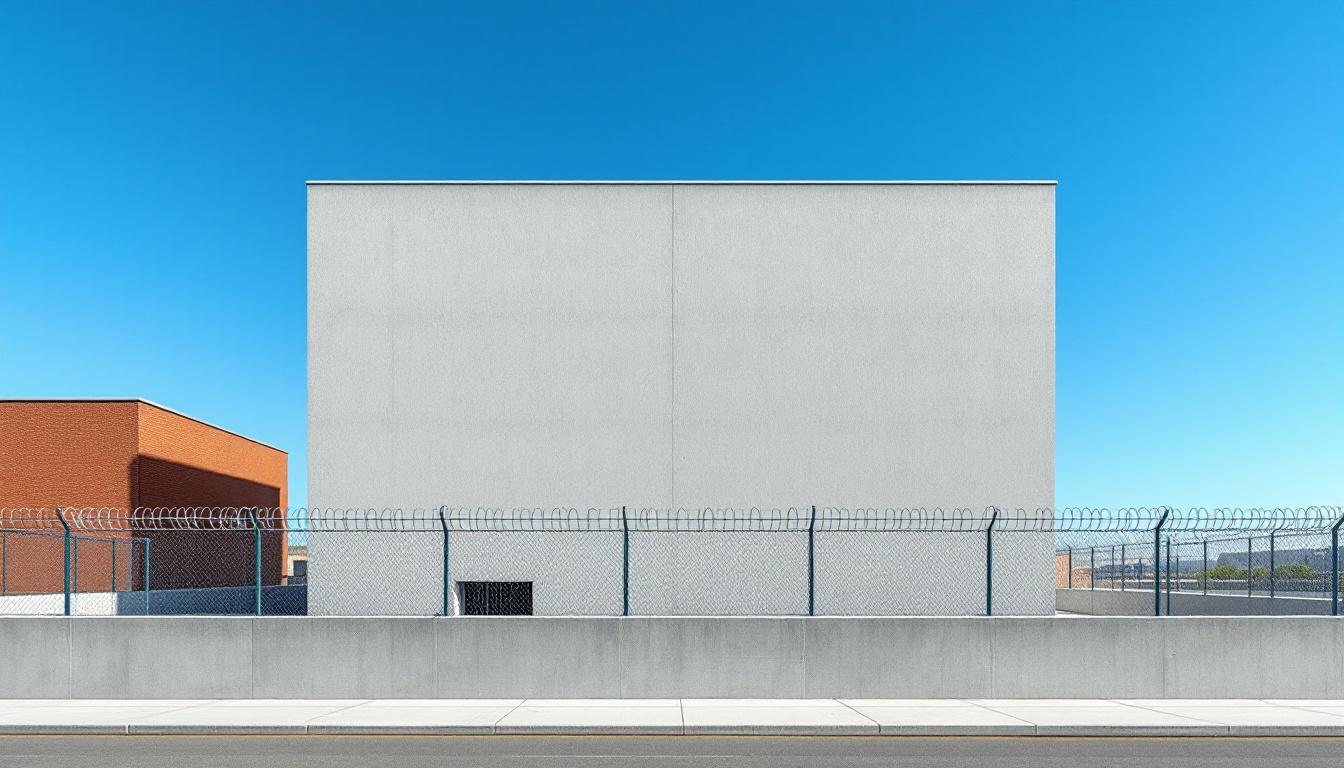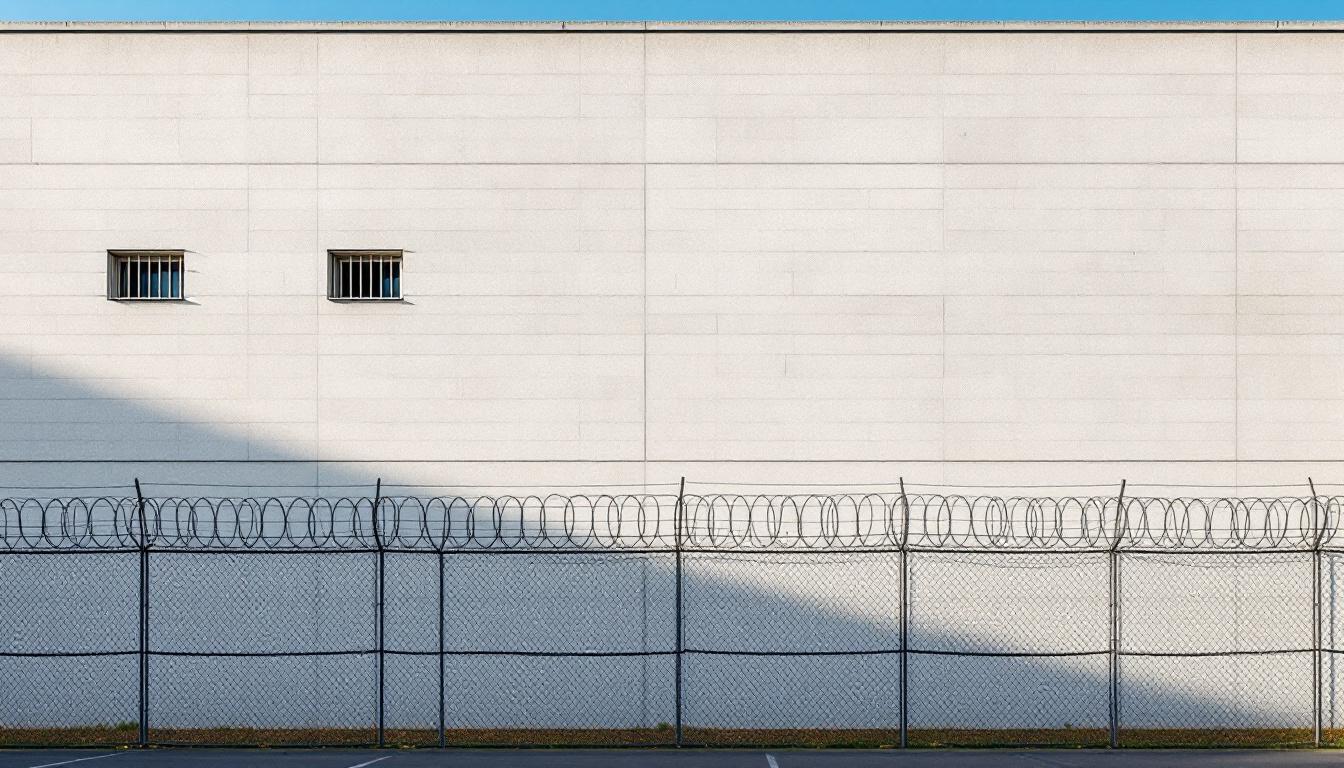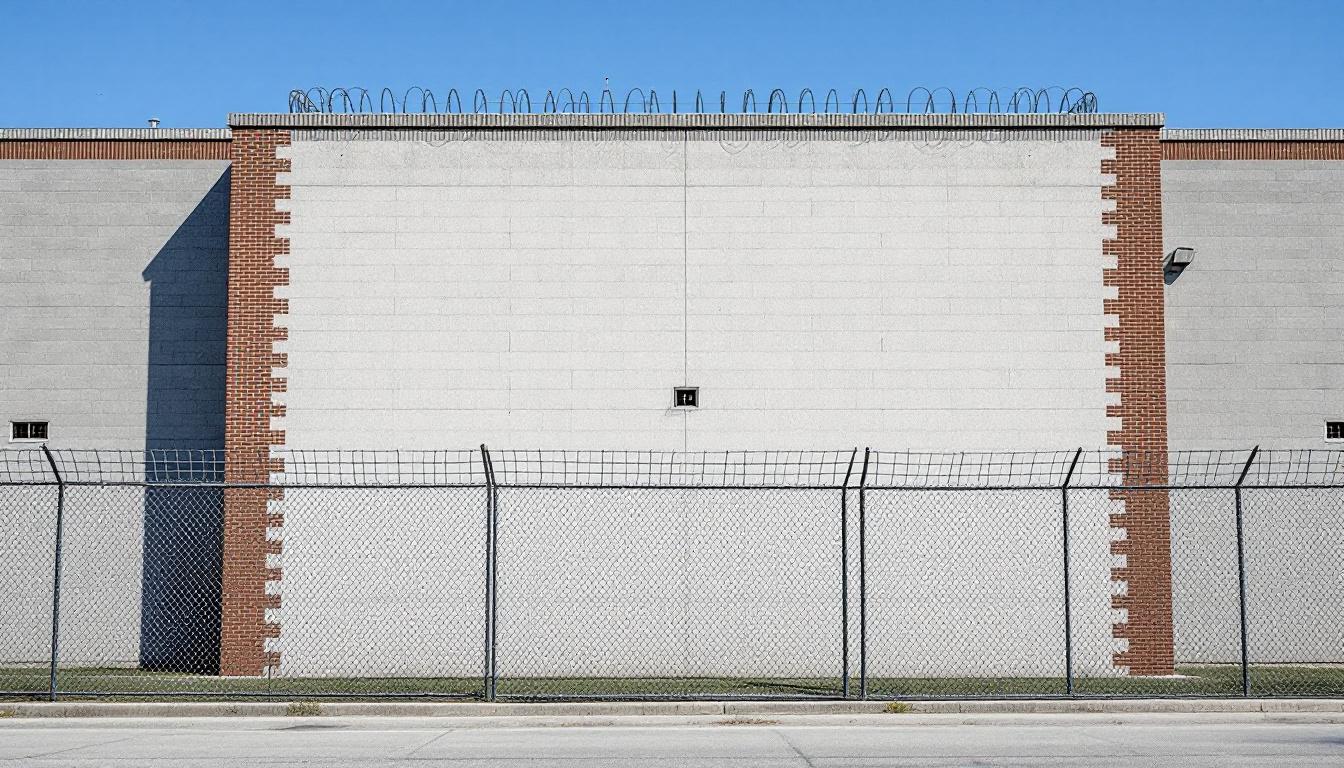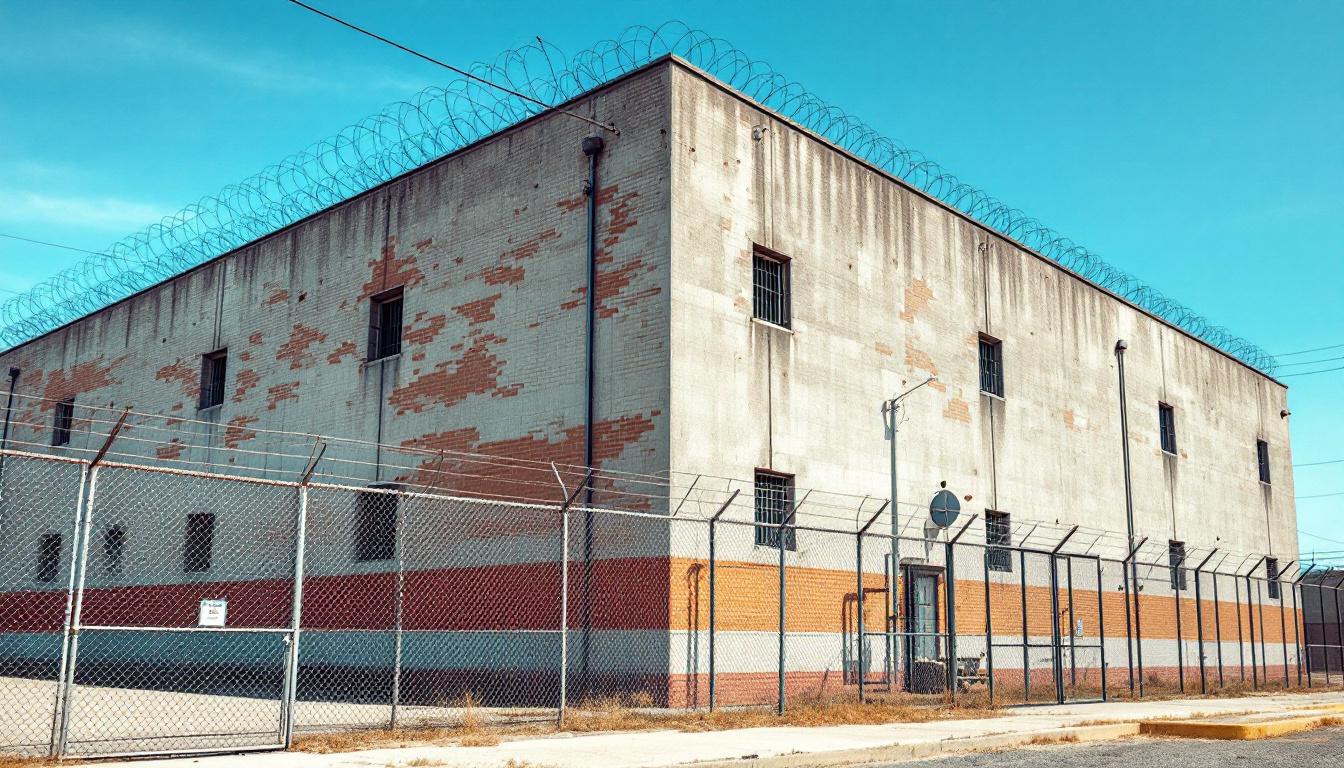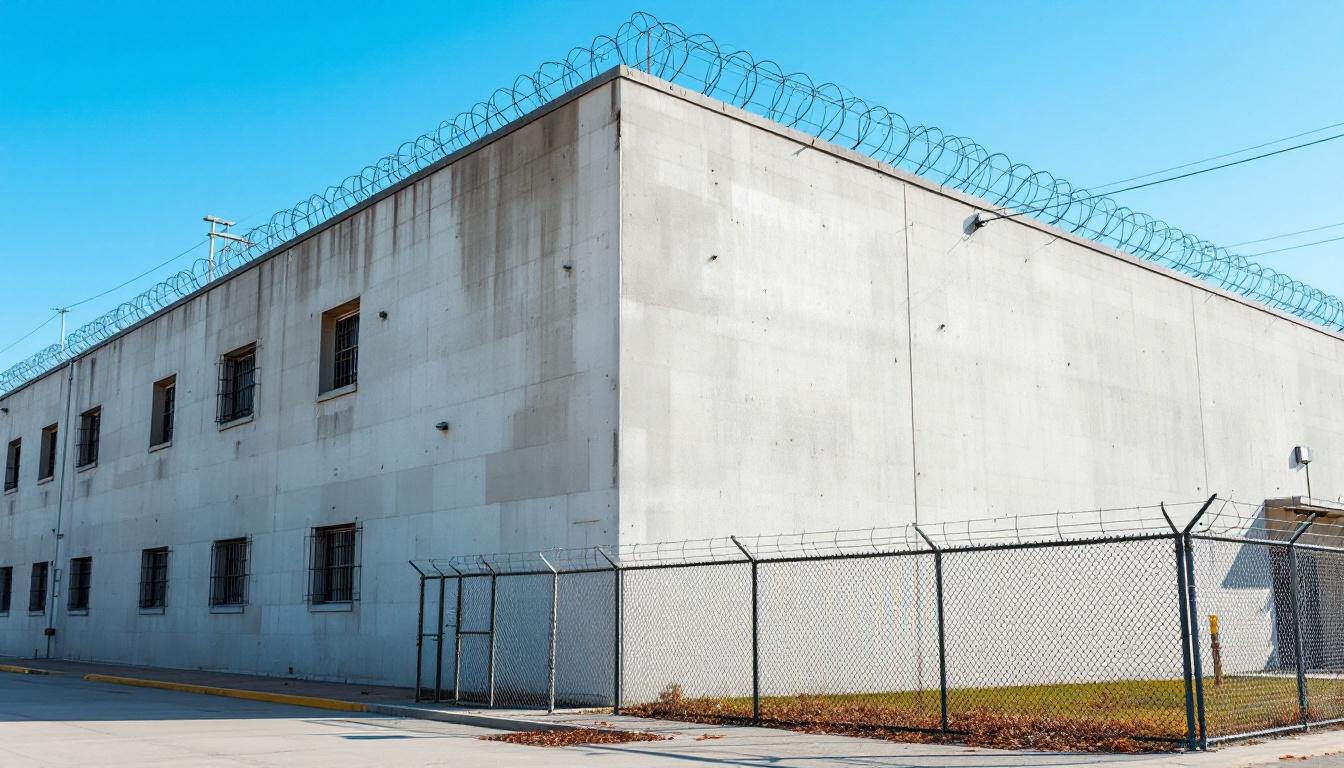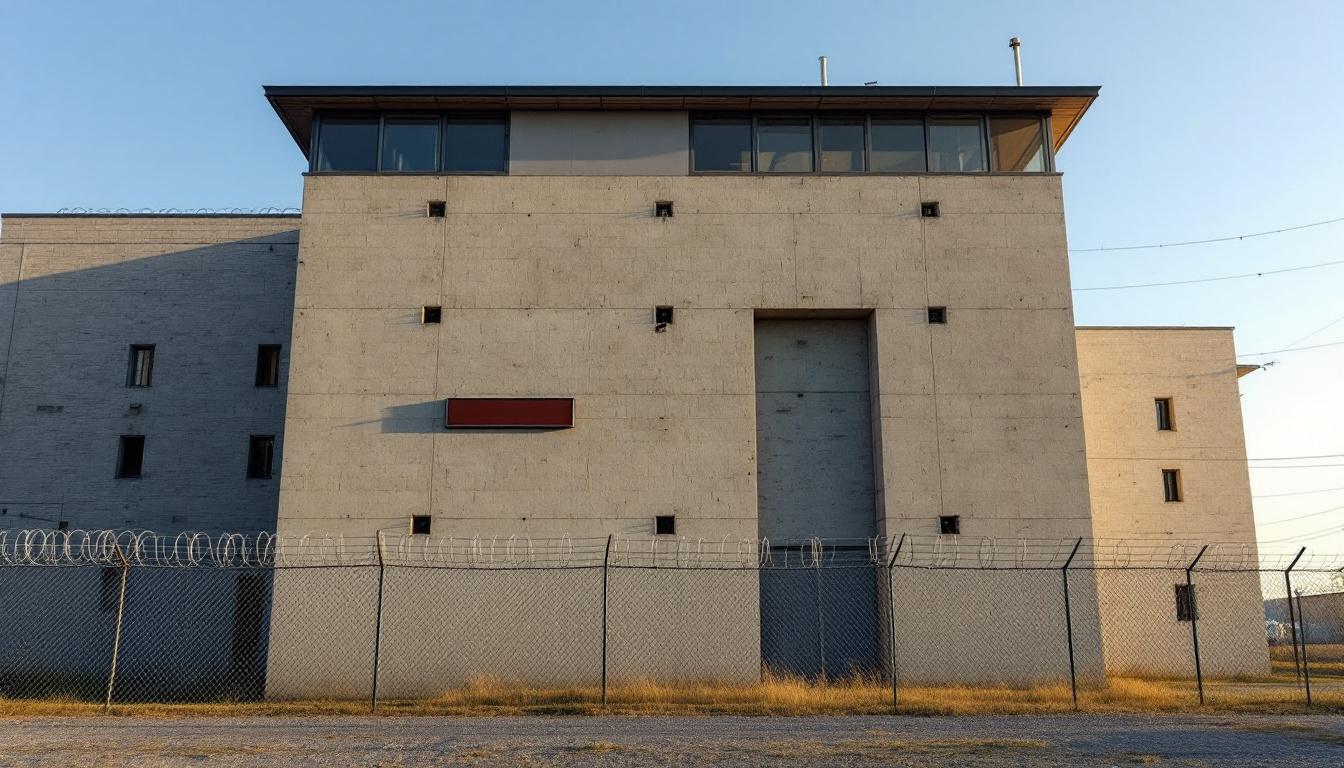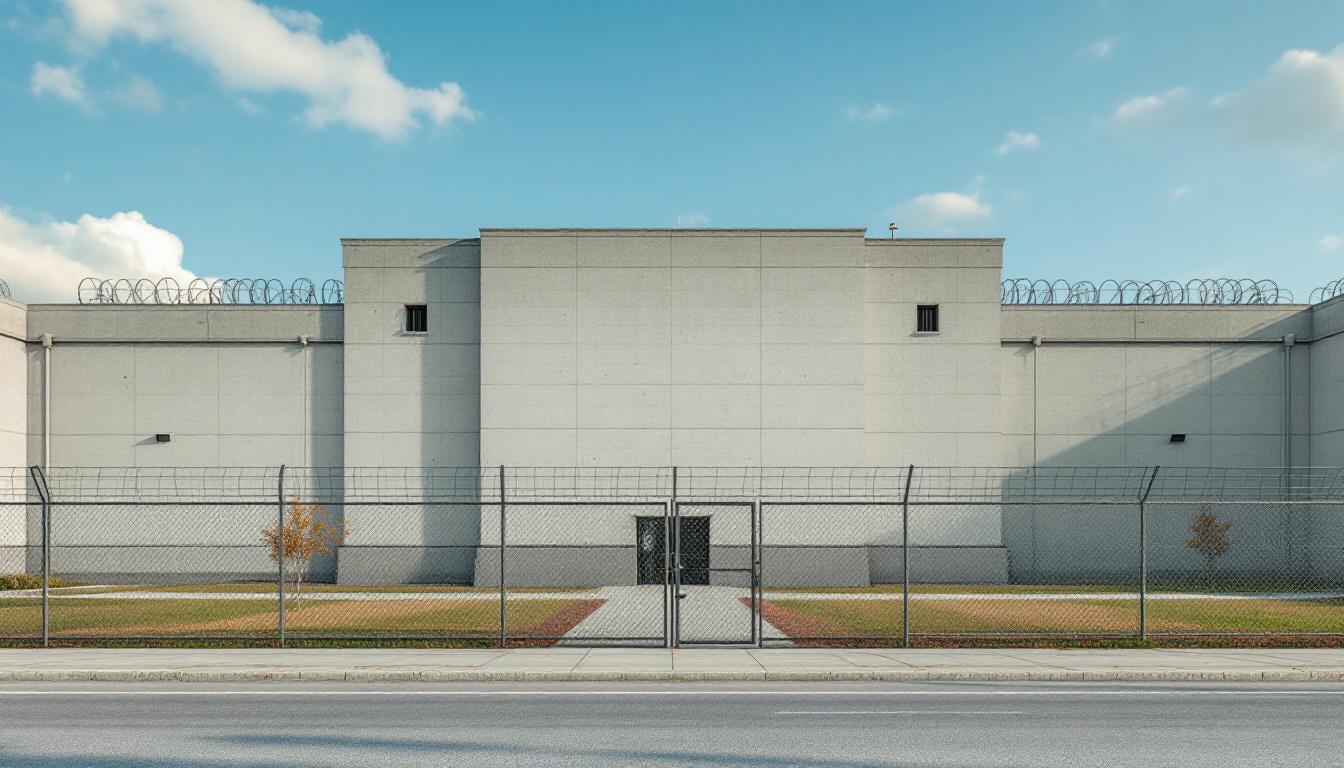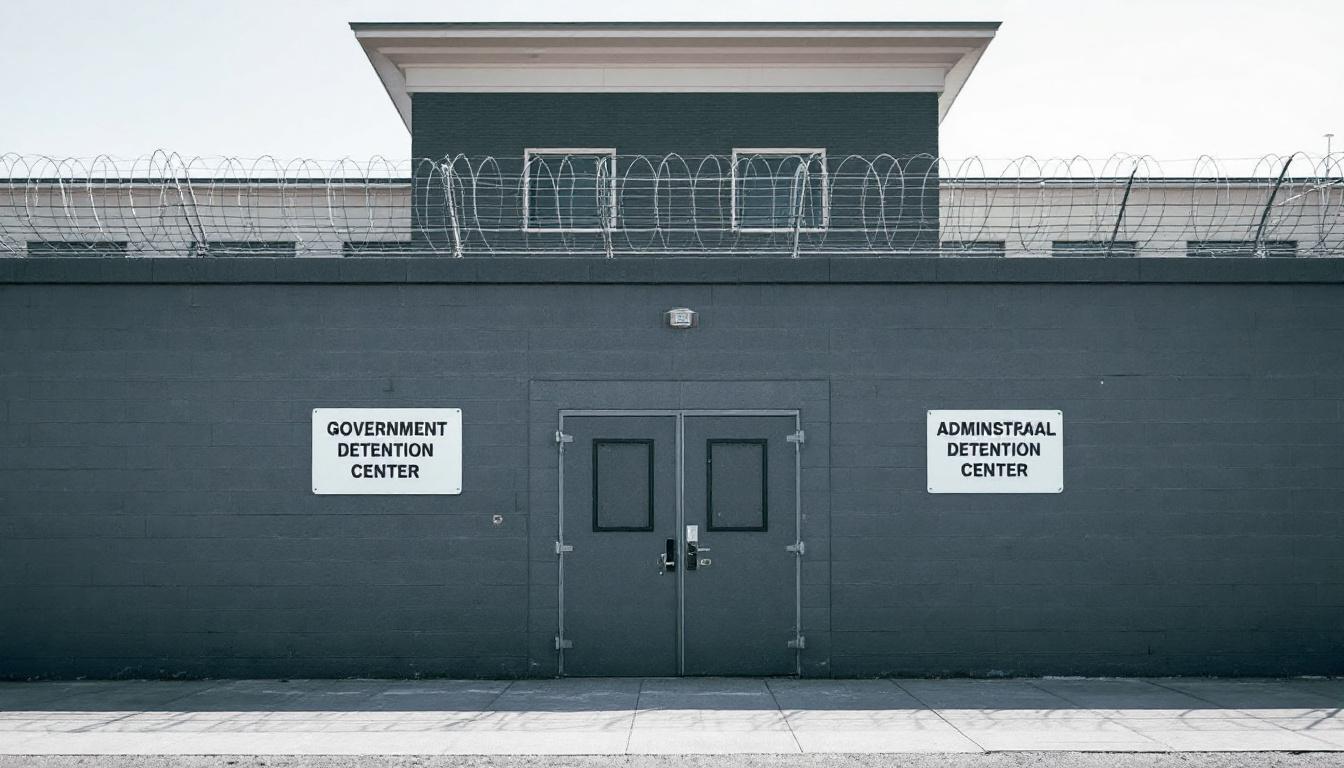
Quick Navigation
How to contact an inmate at Central Maryland Correctional Facility
This comprehensive guide will walk you through how to connect with an inmate at Central Maryland Correctional Facility. Follow the steps below to find an inmate and send letters and photos:
- Search for the inmate using our search tool below
- Create your account or log in to Penmate
- Write your message (up to 6,000 characters)
- Send instantly - inmates receive printed copies daily
Find an Inmate
Search for an inmate to start communicating today
Tip: You can search by first name, last name, or inmate ID number
To contact a person at Central Maryland Correctional Facility start by searching for the person on the official facility website. Perform a search by following these steps:
- Step 1: Enter their first name and last name into the search form and click "Search"
- Step 2: Locate their inmate record
- Step 3: Write down their Inmate ID and any housing information provided
Important! Be sure to enter the person's full name. Nicknames should not be used.
How to Send Messages to Inmates

You can use your phone or computer to send emails, letters, and photos to an inmate. Messages are sent electronically to inmate tablets or kiosks at the facility. If you would like to send a message, start by searching for an inmate at Central Maryland Correctional Facility.
Sending Photos and Postcards

A great way to send love and support to a loved one at Central Maryland Correctional Facility is to send photos and postcards. It only takes a few minutes to send photos from your phone and it makes a huge difference. You can also mail postcards with words of support and inspiration, or design your own postcard for special moments like birthdays and holidays.
Important! Be sure not to send any explicit photos or they may not be approved by the facility. You can also use a photo printing app like Penmate to make sure your photos are printed at the correct size (4x6 or 3x5) and are mailed according to the rules and regulations of Central Maryland Correctional Facility.
Frequently asked questions about Central Maryland Correctional Facility
-
How long does it take to deliver a message?
If you're sending an email message your letter is usually delivered within 24-48 hours. For messages sent via mail you should expect delivery within 3-7 days. All messages will need be approved by Central Maryland Correctional Facility.
-
How much does it cost to send a message to Central Maryland Correctional Facility?
You can send a message free using your phone or mail a message via USPS for the price of a $0.60 stamp and envelope. You can also purchase credits or e-stamps from services starting at $1.99.
-
What services can I use to contact an inmate at Central Maryland Correctional Facility?
Penmate
You can use Penmate to send letters and photos to an inmate from your phone. It's an easy way to stay in touch during your loved one's incarceration. Use the inmate locator to find an inmate's location and contact information, then you can send messages within a few minutes.
Securus messaging
Securus may be another option for communicating with an inmate at Central Maryland Correctional Facility. You can create a friends and family account and purchase credits to send messages. All messages will be reviewed and must be approved by the facility.
JPay
Some county jails and state prisons may support sending messages with JPay. You must register an account with the system, find your loved one, and purchase stamps to send messages. For some locations you can also attach photos.
Smart Jail Mail
You may also check if Smart Jail Mail is available at Central Maryland Correctional Facility. Smart Jail Mail is operated by Smart Communications and has contracted with some state and county jails. After purchasing credits, your messages and photos are sent to the facility, printed out, and then handed out to your loved one.
-
What is the mailing address of Central Maryland Correctional Facility?
Mailing address:
Central Maryland Correctional Facility
7301 Buttercup Rd
Sykesville, MD 21784
Phone: (410) 781-4444Business hours:
- Monday: Open 24 hours
- Tuesday: Open 24 hours
- Wednesday: Open 24 hours
- Thursday: Open 24 hours
- Friday: Open 24 hours
- Saturday: Open 24 hours
- Sunday: Open 24 hours
-
What are the visiting hours at Central Maryland Correctional Facility?
Visiting hours at Central Maryland Correctional Facility vary by housing unit and security level. Generally, visits are scheduled on weekends and holidays, with some facilities offering weekday visits. Contact the facility directly at (410) 781-4444 or check their website for the current visiting schedule. Visits typically last 30-60 minutes and must be scheduled in advance.
-
What items are prohibited when sending mail to Central Maryland Correctional Facility?
Prohibited items typically include: cash, personal checks, stamps, stickers, glitter, glue, tape, staples, paperclips, polaroid photos, musical or blank greeting cards, hardcover books, magazines with staples, and any items containing metal or electronics. Only send letters on plain white paper with blue or black ink. Photos must be printed on regular photo paper (no Polaroids). Always check with Central Maryland Correctional Facility for their specific mail policies.
-
How do I send money to an inmate at Central Maryland Correctional Facility?
You can send money to an inmate at Central Maryland Correctional Facility through several methods: 1) Online using JPay, Access Corrections, or the facility's approved vendor, 2) Money orders mailed directly to the facility with the inmate's name and ID number, 3) Kiosks located in the facility lobby, or 4) Over the phone using a credit or debit card. Fees vary by method, typically ranging from $2.95 to $11.95 per transaction.
-
Can I schedule a video visit with an inmate at Central Maryland Correctional Facility?
Many facilities now offer video visitation as an alternative to in-person visits. At Central Maryland Correctional Facility, video visits may be available through services like Penmate, Securus Video Connect, GTL, or ICSolutions. Video visits typically cost $10-20 for 20-30 minutes and must be scheduled in advance. You'll need a computer or smartphone with a camera and reliable internet connection. Contact the facility for their specific video visitation policies and approved vendors.
-
What identification do I need to visit an inmate at Central Maryland Correctional Facility?
All visitors must present valid government-issued photo identification such as a driver's license, state ID, passport, or military ID. Minors must be accompanied by a parent or legal guardian who can provide the minor's birth certificate. Some facilities require visitors to be on the inmate's approved visitation list, which may require a background check. Contact Central Maryland Correctional Facility for specific ID requirements and visitor approval procedures.
-
How can I find out an inmate's release date?
To find an inmate's release date at Central Maryland Correctional Facility, you can: 1) Use the online inmate search tool if available, 2) Call the facility's records department, 3) Contact the inmate's case manager or counselor, or 4) Have the inmate provide this information during a call or visit. For privacy reasons, some facilities only release this information to immediate family members.
Facility Overview
Contact Information
Central Maryland Correctional Facility7301 Buttercup Rd
Sykesville, MD 21784
Phone: (410) 781-4444
Official Website
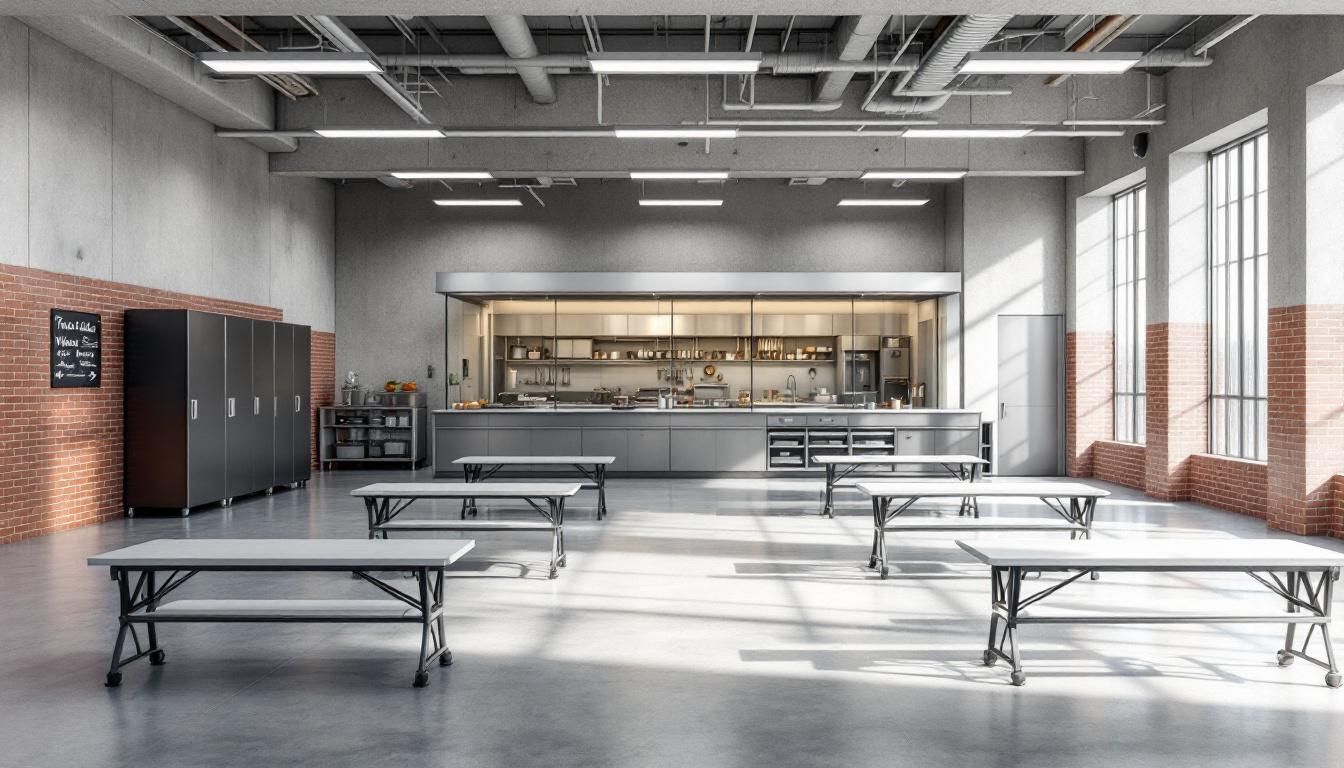
About Central Maryland Correctional Facility
Nestled within the greater Baltimore-Washington corridor, Jessup serves as home to several Maryland Corrections Facilities, MD that have evolved significantly since the area's development as a correctional hub in the mid-20th century. This strategic location has allowed these institutions to develop comprehensive approaches to both custody and rehabilitation, drawing from the region's educational resources and community partnerships. The facilities typically operate with a dual mission of maintaining public safety while providing residents services designed to address the underlying factors that contribute to criminal behavior, reflecting Maryland's broader commitment to evidence-based correctional practices.
The historical context of corrections in Jessup reveals a gradual shift from purely punitive models to more rehabilitative frameworks, with modern MD correctional facility operations emphasizing structured programming and skill development. Educational opportunities often include basic literacy programs, GED preparation, and vocational training in fields such as construction, culinary arts, and computer technology. Mental health services and substance abuse treatment programs generally form core components of the rehabilitation approach, recognizing that many residents arrive with complex needs requiring specialized intervention. These correctional facility programs typically operate alongside work assignments and life skills training, creating a structured environment aimed at preparing individuals for successful community reentry while maintaining the security necessary for public safety.
Programs & Services
Therapeutic interventions and skill-building opportunities form the cornerstone of rehabilitation efforts within Maryland's correctional system. These comprehensive initiatives typically focus on addressing the underlying factors that contribute to criminal behavior while simultaneously preparing residents for successful community reintegration. The approach often emphasizes personal accountability, practical skill development, and emotional wellness through structured programming that may deliver both individual and group-based interventions.
Educational advancement serves as a primary pathway for resident transformation, with initiatives that may include basic literacy instruction, GED preparation, and post-secondary coursework opportunities. Civic education components often help residents understand their rights and responsibilities as community members, while financial literacy training typically covers budgeting, banking, and credit management skills essential for independent living. Additionally, vocational training initiatives frequently provide hands-on experience in trades such as construction, manufacturing, and food service, equipping residents with marketable skills that can lead to sustainable employment upon release.
Support services extend beyond traditional classroom learning to address the complex needs of the resident population. Therapeutic services may deliver individual counseling, substance abuse treatment, and mental health support through licensed professionals who work closely with residents to develop coping strategies and life skills. Additionally, specialized training opportunities such as commercial driving (CDL) preparation and landscaping certification often provide residents with industry-recognized credentials. These comprehensive support initiatives typically recognize that successful reentry requires both practical skills and emotional stability, creating a foundation for long-term positive outcomes in the community.
Daily Life & Visitation
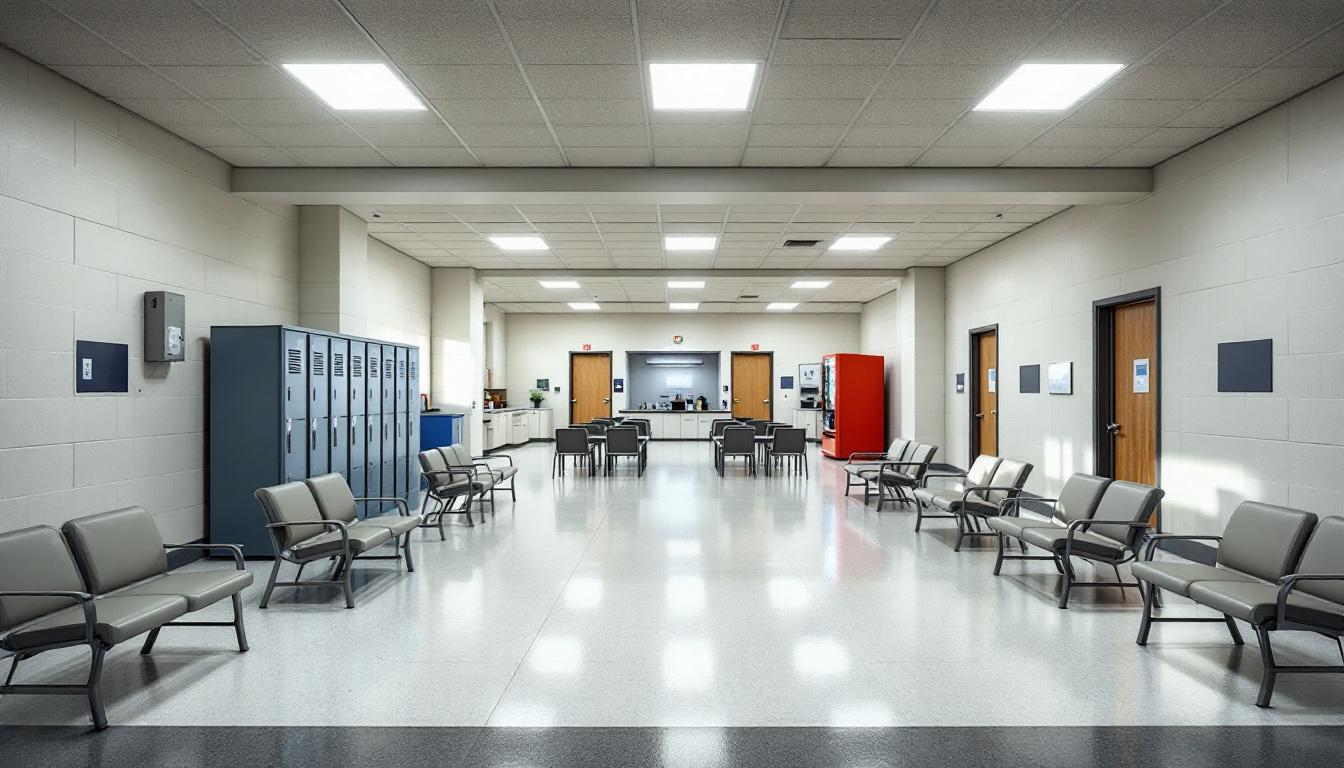
Structure and predictability form the foundation of each day, with residents following established routines that currently provide stability and purpose. Wake-up calls typically occur in the early morning hours, followed by scheduled count times that continue throughout the day at regular intervals. Residents generally participate in assigned activities, work details, or educational programming during designated hours, with meal times serving as consistent anchors in the daily schedule.
Living accommodations at Maryland correctional facilities typically include dormitory-style housing or individual cells, depending on the facility's design and security classification. Residents usually share common areas for dining and recreation, with meals served at scheduled times in central dining facilities. Personal property allowances generally include basic necessities and approved items that may be purchased through the commissary system. Additionally, residents often have access to recreational activities such as television viewing, library services, and outdoor exercise periods when weather and security conditions permit.
Programming schedules deliver educational opportunities, vocational training, and counseling services that help residents develop skills for successful reintegration. Work assignments typically include facility maintenance, food service, and other operational support roles that provide structure while contributing to daily operations. While security procedures regulate movement throughout the facility, residents generally maintain contact with family members through scheduled visitation, telephone calls, and correspondence. These communication opportunities often serve as important sources of support and motivation during incarceration.
Ready to Connect?
Start communicating with your loved one today
Search for an Inmate
